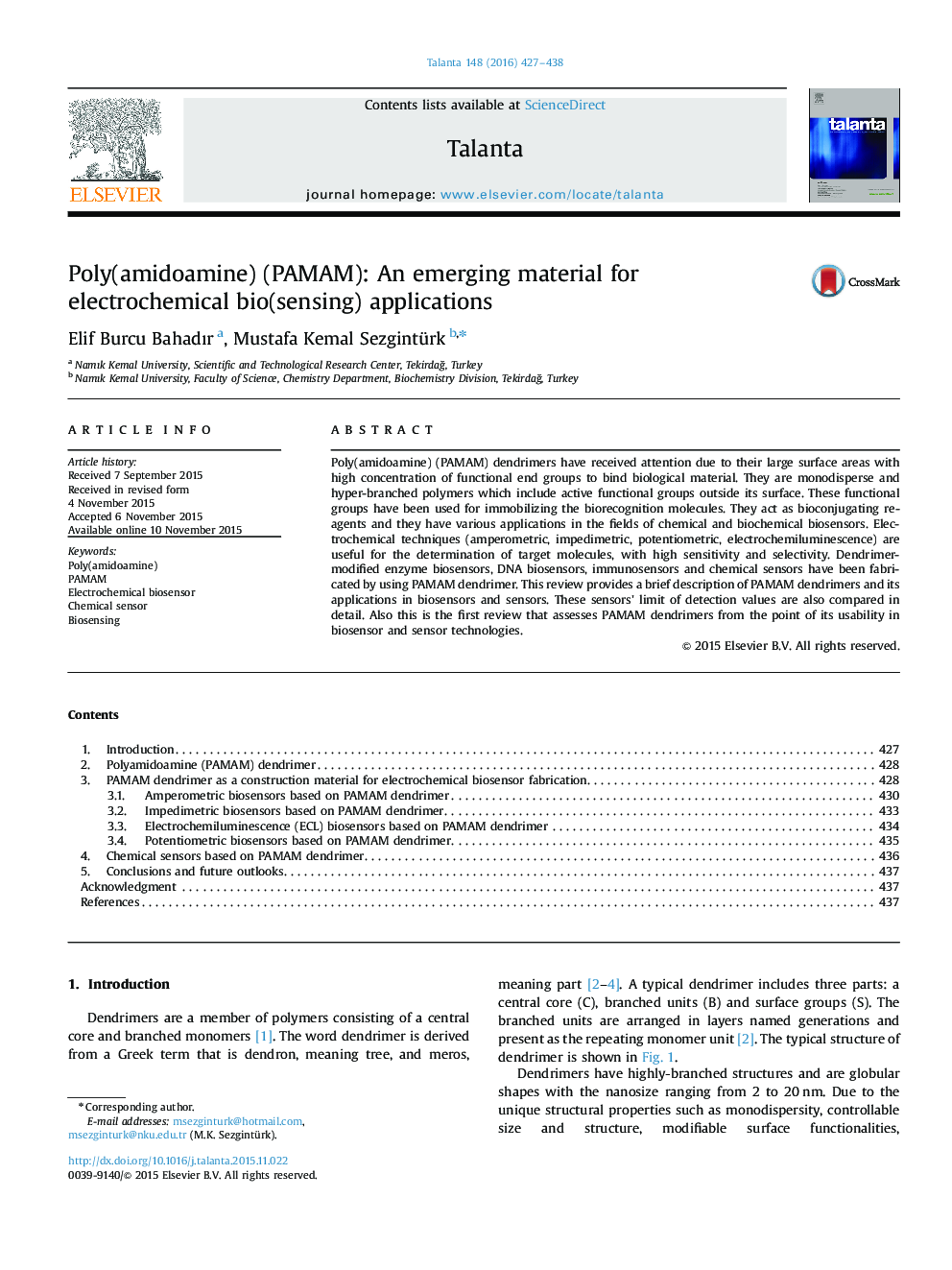| Article ID | Journal | Published Year | Pages | File Type |
|---|---|---|---|---|
| 1243804 | Talanta | 2016 | 12 Pages |
•PAMAM based electrochemical sensors and biosensors are reviewed in detail.•The advantages and disadvantages of PAMAM based (bio)sensing systems are described.•Analytical performances of PAMAM based (bio)sensing technologies are compared.
Poly(amidoamine) (PAMAM) dendrimers have received attention due to their large surface areas with high concentration of functional end groups to bind biological material. They are monodisperse and hyper-branched polymers which include active functional groups outside its surface. These functional groups have been used for immobilizing the biorecognition molecules. They act as bioconjugating reagents and they have various applications in the fields of chemical and biochemical biosensors. Electrochemical techniques (amperometric, impedimetric, potentiometric, electrochemiluminescence) are useful for the determination of target molecules, with high sensitivity and selectivity. Dendrimer-modified enzyme biosensors, DNA biosensors, immunosensors and chemical sensors have been fabricated by using PAMAM dendrimer. This review provides a brief description of PAMAM dendrimers and its applications in biosensors and sensors. These sensors' limit of detection values are also compared in detail. Also this is the first review that assesses PAMAM dendrimers from the point of its usability in biosensor and sensor technologies.
Graphical abstractFigure optionsDownload full-size imageDownload as PowerPoint slide
